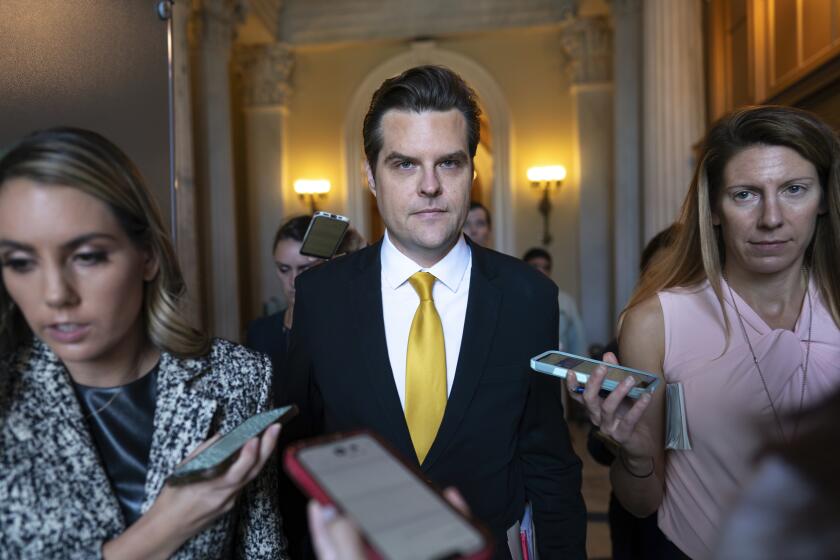Gov. Brownâs vision
The gist of Gov. Jerry Brownâs State of the State address â that California is recovering â is hard to absorb, given the continuing high levels of unemployment, the year-to-year multibillion-dollar shortfalls in the state budget, the shuttering of state parks, the looming cuts to schools and the dismantling of human services programs.
Yet the numbers, while hardly overwhelming, show that California has slowly, tentatively, turned a corner. What now?
Brown lays out a plan that is controversial yet simple: Get the rest of the way over the hump with deeper cuts and with a temporary tax increase; shift more authority for incarceration and education from Sacramento to counties and school districts; fix coming budget problems, most notably public pensions, before they actually become problems; and keep the state on the cutting edge of environmental policy, transportation leadership and statewide opportunity.
The governor got most of it right. The tax increase he is seeking would indeed be temporary and would in fact leave Californians still paying far less in taxes than they did two years ago. And without it, a further dismantling of the stateâs public education system would be necessary, foolishly robbing from our future. Even if the increases are approved, the spending cuts heâs proposing â including drastic slashes in Medi-Cal funding â will end up costing the state more in the long run.
He is correct, but moves only halfway to the goal, on so-called realignment. In transferring responsibility for imprisoning thousands of inmates to counties, the governor is continuing a rollback of the Sacramento-oriented centralizing over which he presided in his first round as governor, in the 1970s. California can cap property taxes, as it did with Proposition 13 in 1978, and still return to local communities much of the decision-making power they lost in the ensuing years when Sacramento back-filled the depleted local coffers. The latest addition to the governorâs prison realignment plan is merely strengthening the promise of jail funding to counties. To truly realign, the governor must also return to county residents much of their former power to raise their own revenue and make their own spending decisions.
Likewise, returning a measure of control over education decisions to local school districts is a healthy philosophical move, as far as it goes. But itâs not yet clear whether relaxing some testing, as he proposes, truly moves the state in that direction.
The governor also took an appropriate swipe at âdeclinistsâ: those people who insist that the stateâs predicament is part of some inexorable fall rather than a fixable result of poor policy and an especially bad, but temporary, economic turn. Brown knows that when the state emerges from its budget winter, it must be ready to face the future â with investments in clean energy, swift transportation and nimble government.
As in his younger days, Brown has little problem with vision. To get Californians to follow, he will need to explain further â and to keep explaining â that heâs got the proper destination in mind.
More to Read
A cure for the common opinion
Get thought-provoking perspectives with our weekly newsletter.
You may occasionally receive promotional content from the Los Angeles Times.










